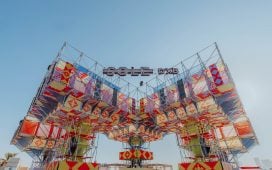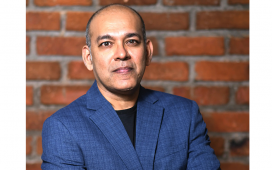
It seems like every year is dubbed “a year like no other”. Although the change might have been faster in some parts of the world compared with the Middle East, 2017 was rather a dramatic year, bringing in much heat in the region’s political and economic landscape. With its unique diversity, it will be incredibly difficult to get a clear picture of how the market is evolving and understand consumers and their motivations.
There is no doubt that social media plays a vital role, and the Middle East has become an active participator in global social media conversation. The region posts more than 17 million times a day on Twitter, according to research by Crimson Hexagon, and this is testimony to the importance of social media to consumers’ purchasing behaviour and the great impact it has on companies’ marketing and communication strategy shift towards social media marketing, as well as their heavy investment on these platforms.
Should we say TV, out-of-home and print are going to be obsolete in 2018? I assume we will see less marcomms across these channels going forward. That being said, companies should not feel at ease with just advertising on any social media platforms, as their audience demographics can change seemingly overnight. Each business has its own unique audience identity, but that segmentation might not apply to each social media network successfully.
Reaching the right audiences has never been harder, and grasping up-to-date data on social media demographics helps to achieve better and greater impact and return on investment. A key reflection on this subject which needs to be made is that the Middle East and Africa is one of the fastest growing markets for video content consumers. Creating interesting and meaningful video content would give an edge to consumer communication. The use of visual content has taken an upward spiral in popularity; Instagram now has more users than Twitter and we have seen fast growth of Instagram users in the UAE and KSA in the past 12 months. Facebook, for example, might be considered by some users a platform for Generation X, a less ‘hip’ generation, yet it remains an important platform in a region with more than 300 million people, and it has room to grow. Many of these social media experiences have mobile phones at their heart. More than 90 percent of users access these platforms via their smartphones. According to GSMA, the total number of smartphone connections in the region will grow by 117 million to 327 million, an important and great opportunity for companies to consider.
The internet of things (IoT), augmented reality (AR) and artificial intelligence (AI) are on the horizon and will continue to significantly contribute to the evolution of e-commerce in 2018. The acquisition of those technologies or any other trend involves monetary transactions, which outlines the growth rates of e-commerce. The region is home to many people with good disposable incomes. More than two-thirds of the population use the internet, with penetration exceeding 90 percent in the UAE alone. And yet online shopping has been sprouting rather slowly in this region, due to different reservations. Consumer trust, lack of awareness, and data security are the main factors pushing consumers to adhere to the traditional notion of “cash is king”.
While the payments infrastructure front in the region is still developing, we can see a slight improvement in online vs retail shopping in 2016-17, and a growing number of consumers are in favour of online, mobile banking payments and services like Venmo, Paypal, and Bitcoin. Creating secure and user-friendly payment methods would increase consumers’ interest to shift to online purchase and increase companies’ sales and return on investment. There is no doubt that we live in a part of the world that is caught between the competing pulls of modernisation and tradition, and we need to observe and understand consumer behaviours constantly to keep up with the diverse and dynamic nature of this region.









